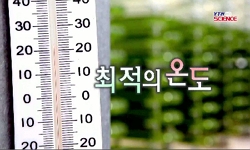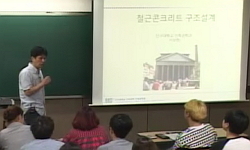Torsional behavior of concrete pavement slabs due to temperature and moisture effects is constrained by self weight and friction etc, and causes stress as the result. The stress due to humidity variation in the slab is difficult to calculate while tha...
http://chineseinput.net/에서 pinyin(병음)방식으로 중국어를 변환할 수 있습니다.
변환된 중국어를 복사하여 사용하시면 됩니다.
- 中文 을 입력하시려면 zhongwen을 입력하시고 space를누르시면됩니다.
- 北京 을 입력하시려면 beijing을 입력하시고 space를 누르시면 됩니다.

콘크리트 포장 슬래브 부등 건조수축 등가 온도차이의 모형화 = Modeling of Differential Shrinkage Equivalent Temperature Difference for Concrete Pavement Slabs
한글로보기https://www.riss.kr/link?id=A104949658
- 저자
- 발행기관
- 학술지명
- 권호사항
-
발행연도
2009
-
작성언어
Korean
-
주제어
Concrete pavement ; Concrete slab ; Differential shrinkage ; Humidity ; Temperature ; 콘크리트 포장 ; 콘크리트 슬래브 ; 부등 건조수축 ; 온도 ; 습도
-
등재정보
KCI등재
-
자료형태
학술저널
- 발행기관 URL
-
수록면
59-68(10쪽)
-
KCI 피인용횟수
2
- 제공처
-
0
상세조회 -
0
다운로드
부가정보
다국어 초록 (Multilingual Abstract)
Torsional behavior of concrete pavement slabs due to temperature and moisture effects is constrained by self weight and friction etc, and causes stress as the result. The stress due to humidity variation in the slab is difficult to calculate while that due to temperature variation can easily be calculated by a commercial structural analysis program. Thus, the slab behavior can be predicted more accurately if the humidity effect is converted to equivalent temperature and is used as an input of structural analysis. In this study, a concrete pavement slab was constructed and strains of the slab due to environmental loadings were measured for long-term period. Thermal strains were subtracted from the measured strains by using thermal expansion coefficient of the concrete measured in a laboratory. Shrinkage strains, the remained strains, was supposed as additional thermal strains to calculate imaginary temperature with equivalent effect of the shrinkage by dividing the shrinkage with the thermal expansion coefficient. An existing shrinkage model was modified by considering the self weight and friction to be used in another model which can convert differential shrinkage between top and bottom of the slab to equivalent temperature difference. Addition research efforts on tensile stress reduction according to steady increase in the compressive strains are warranted for more accurate stress calculation.
국문 초록 (Abstract)
온도 및 수분의 영향에 의하여 발생한 콘크리트 포장 슬래브의 컬링(curling)과 와핑(wraping)의 비틀림 거동은 자중이나 마찰력 등에 의하여 구속되며 이로 인하여 응력이 발생된다. 슬래브 내...
온도 및 수분의 영향에 의하여 발생한 콘크리트 포장 슬래브의 컬링(curling)과 와핑(wraping)의 비틀림 거동은 자중이나 마찰력 등에 의하여 구속되며 이로 인하여 응력이 발생된다. 슬래브 내부의 온도 변화에 의해 발생한 응력은 상용 구조해석 프로그램으로 쉽게 계산할 수 있지만 습도 차이에 의하여 발생되는 응력은 기존 프로그램으로는 계산하기 어렵다. 따라서, 슬래브의 거동에 미친 습도의 영향이 등가의 온도로 환산되어 구조해석에 입력값으로 사용된다면 보다 정확하게 환경하중에 의한 슬래브의 거동을 예측할 수 있을 것이다. 본 연구에서는 콘크리트 슬래브를 현장에 시공하여 환경하중에 의해 발생된 변형률을 장기적으로 측정하였으며 실내에서 측정된 콘크리트 시편의 열팽창 계수를 사용하여 열변형률을 추출하였다. 나머지 변형률인 건조수축변형률을 추가적인 열변형률이라고 가정하고 이를 열팽창 계수로 나누어 줌으로써 건조수축과 등가의 영향을 갖는 가상의 온도가 계산되었다. 자중이나 마찰력 등이 고려되도록 기존 건조수축 모형을 수정하였으며, 이를 이용하여 슬래브 상부와 하부 상이에 발생한 건조수축의 차이를 등가의 온도차이로 환산할 수 있는 모형을 개발하였다. 보다 정확한 응력계산을 위하여 압축 변형률의 지속적 증가에 따른 인장응력 감소에 관한 추가적인 연구가 이어질 것이다.
참고문헌 (Reference)
1 이효림, "환경하중에 의한 콘크리트 재료특성 연구" 홍익대학교 2003
2 양성철, "형상비 및 골재의 종류에 따른 콘크리트 시편의 건조수축특성 연구" 한국도로학회 6 (6): 109-121, 2004
3 김진철, "콘크리트의 건조수축 메커니즘과 예측모형" 5 (5): 32-41, 2003
4 Reddy, A., "Warping Stresses and Deflections in Concrete Pavements: Part III" Highway Research Record 1963
5 Heath, A. C, "Top-Down Cracking of Rigid Pavements Constructed with Fast-Setting Hydraulic Cement Concrete" TRB, National Research Council 3-12, 2000
6 Richardson, J. M, "Stress Caused by Temperature Gradient in Portland Cement Concrete Pavements" 7-13, 1987
7 ACI Committee 209, "Prediction of Creep,Shrinkage,and Temperature Effects in Concrete Structures" American Concrete Institute 1997
8 Bazant, Z. P, "Practical Prediction of Time-Dependent Deformations of Concrete. Part 1, Shrinkage; Part 2, Creep" 2 (2): 301-328, 1978
9 Fang, Y., "Environmental Influences on Warping and Curling of PCC Pavement" 2001
10 Jeong, J. H, "Environmental Effects on the Behavior of Jointed Plain Concrete Pavements" ASCE 131 (131): 140-148, 2005
1 이효림, "환경하중에 의한 콘크리트 재료특성 연구" 홍익대학교 2003
2 양성철, "형상비 및 골재의 종류에 따른 콘크리트 시편의 건조수축특성 연구" 한국도로학회 6 (6): 109-121, 2004
3 김진철, "콘크리트의 건조수축 메커니즘과 예측모형" 5 (5): 32-41, 2003
4 Reddy, A., "Warping Stresses and Deflections in Concrete Pavements: Part III" Highway Research Record 1963
5 Heath, A. C, "Top-Down Cracking of Rigid Pavements Constructed with Fast-Setting Hydraulic Cement Concrete" TRB, National Research Council 3-12, 2000
6 Richardson, J. M, "Stress Caused by Temperature Gradient in Portland Cement Concrete Pavements" 7-13, 1987
7 ACI Committee 209, "Prediction of Creep,Shrinkage,and Temperature Effects in Concrete Structures" American Concrete Institute 1997
8 Bazant, Z. P, "Practical Prediction of Time-Dependent Deformations of Concrete. Part 1, Shrinkage; Part 2, Creep" 2 (2): 301-328, 1978
9 Fang, Y., "Environmental Influences on Warping and Curling of PCC Pavement" 2001
10 Jeong, J. H, "Environmental Effects on the Behavior of Jointed Plain Concrete Pavements" ASCE 131 (131): 140-148, 2005
11 McDonald, D, "Development of a Simplified Code Procedure for the Prediction of Shrinkage and Creep" 637-647, 1993
12 Sun, R, "Developement of Shrinkage-Equivalent Temperrature Difference Model for Concrete Pavement slabs" University of Inha 2009
13 CEB-FIP, "CEB-FIP Model Code 1990: Design Code" Thomas Telford Ltd. 1990
14 Burnham, T, "A New Approach to Estimate the In-situ Thermal Coefficient and Drying Shrinkage for jointed Concrete Pavement" 313-332, 2001
동일학술지(권/호) 다른 논문
-
- 한국도로학회
- 박정우
- 2009
- KCI등재
-
고령운전자 교차로 사고의 특성 및 모형 - 청주시 4지 신호교차로를 중심으로 -
- 한국도로학회
- 박병호
- 2009
- KCI등재
-
로짓모델을 이용한 고령운전자 고속도로 교통사고 특성 분석 연구
- 한국도로학회
- 박준태
- 2009
- KCI등재
-
GFRP를 활용한 도로 방음벽 구조물의 구조성능 및 단면형상 개선에 관한 연구
- 한국도로학회
- 정우영
- 2009
- KCI등재
분석정보
인용정보 인용지수 설명보기
학술지 이력
| 연월일 | 이력구분 | 이력상세 | 등재구분 |
|---|---|---|---|
| 2027 | 평가예정 | 재인증평가 신청대상 (재인증) | |
| 2021-01-01 | 평가 | 등재학술지 유지 (재인증) |  |
| 2018-01-01 | 평가 | 등재학술지 유지 (등재유지) |  |
| 2015-01-01 | 평가 | 등재학술지 유지 (등재유지) |  |
| 2011-01-01 | 평가 | 등재학술지 유지 (등재유지) |  |
| 2009-01-01 | 평가 | 등재학술지 유지 (등재유지) |  |
| 2006-01-01 | 평가 | 등재학술지 선정 (등재후보2차) |  |
| 2005-05-29 | 학술지등록 | 한글명 : 한국도로학회논문집외국어명 : 미등록 |  |
| 2005-01-18 | 학회명변경 | 한글명 : 한국도로포장공학회 -> 한국도로학회영문명 : Korean Society Of Pavement Engineers -> Korean Society Of Road Engineers |  |
| 2005-01-01 | 평가 | 등재후보 1차 PASS (등재후보1차) |  |
| 2003-07-01 | 평가 | 등재후보학술지 선정 (신규평가) |  |
학술지 인용정보
| 기준연도 | WOS-KCI 통합IF(2년) | KCIF(2년) | KCIF(3년) |
|---|---|---|---|
| 2016 | 0.27 | 0.27 | 0.23 |
| KCIF(4년) | KCIF(5년) | 중심성지수(3년) | 즉시성지수 |
| 0.26 | 0.27 | 0.436 | 0.09 |




 ScienceON
ScienceON






